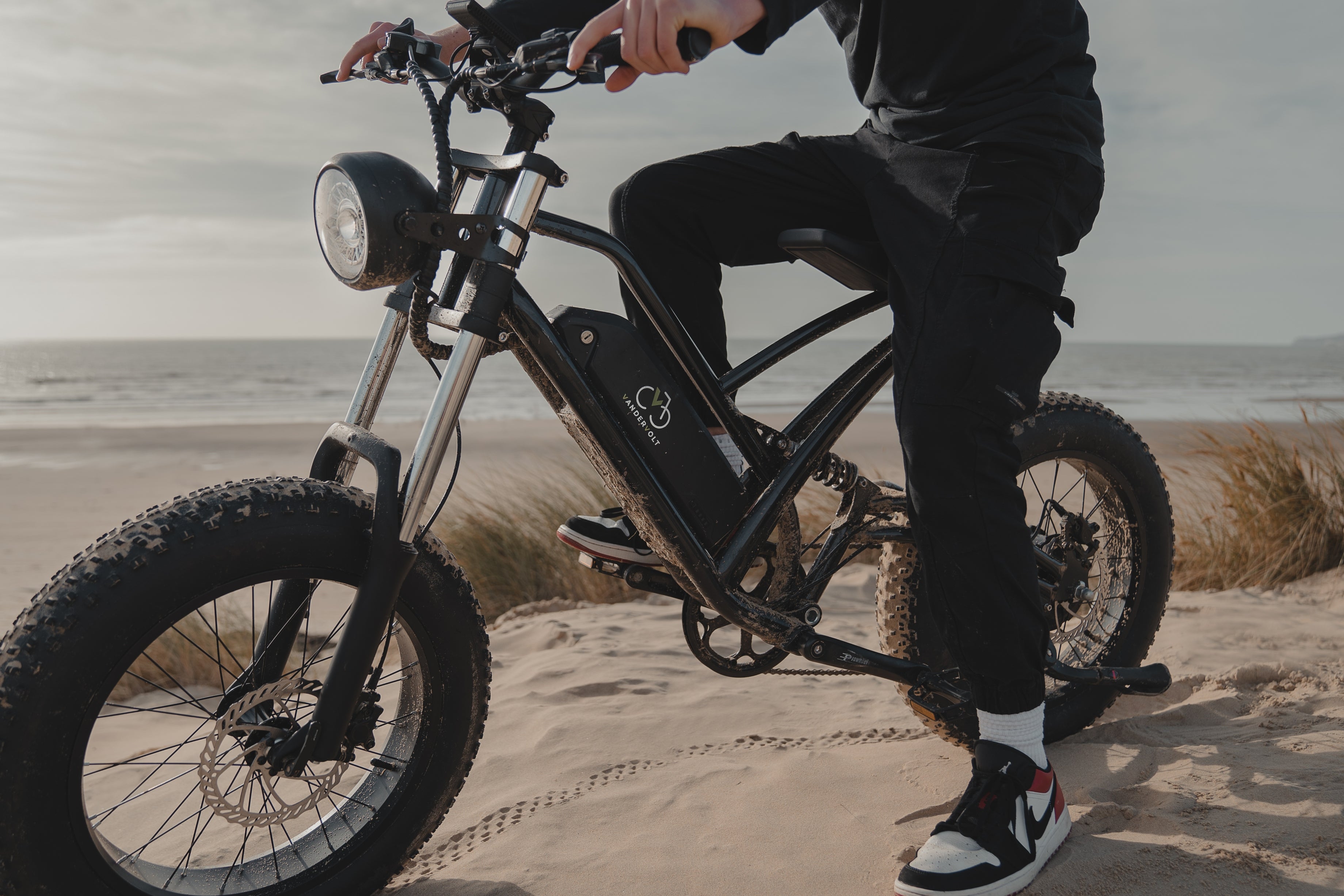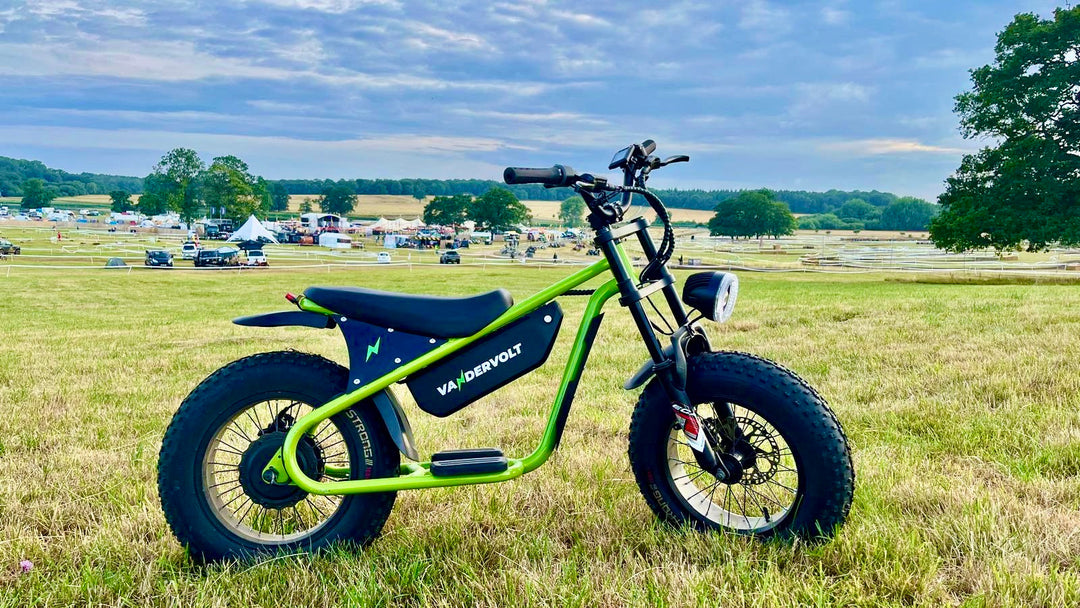Electric bikes, also known as e-bikes, come equipped with an electric motor that assists the rider, making pedalling more accessible and more enjoyable. One common question among potential e-bike owners and riders is whether or not they need to pedal whilst riding their bikes. This blog will delve into the role of the rider and pedalling, the various factors such as regulations, battery life, health benefits, and personal preferences.
How Electric Bikes Work
Just like a non-motorised bike, electric bikes have handlebars, a frame, a seat, two tires, gears and chains, pedals and brakes. Electric bikes, such as The Scramblers, have a small motor that is attached to the chain drive near the pedals. Sometimes, this motor can be built into the front or rear wheel.
The Scrambler bikes lead the way in market-leading safety measures; headlights, indicators, brake lights, horns and an integrated lock all add to a new take on cycling and give riders a new and elevated way of riding electric bikes.
These bikes and other electric bikes, will have a control module on the handlebars so that riders can select their riding mode. Riding modes can either be in the pedal-assist or throttle model. For more information on these riding modes, check out our blog, Do You Need A Licence For An Electric Bike In The UK?
Some bikes will have the ability to sensor if the rider is exerting too much energy when pedalling and will automatically engage the motor so that the boost can be adjusted as needed.
Understanding Electric Bike Mechanics
To understand the significance of pedalling on electric bikes, it is essential to know how they function first. Electric bikes typically come equipped with a pedal-assist or throttle system.
Pedal-assist systems detect the rider’s pedalling motion and provide an additional electric motor boost to the bike. Throttle systems allow riders to engage the electric motor without pedalling. So depending on the type of system your bike has, you will need to understand if pedalling is essential on the bike or not.
Pedalling and Regulations
The regulations surrounding electric bikes vary from country to country and can even differ from region to region. In many places, e-bikes are classified based on their motor power, maximum assisted speed, and whether or not pedalling is required.
In some areas, electric bikes that don’t require pedalling are categorised as mopeds of motorcycles and will be subject to additional licensing, registration, and insurance requirements.
Considering the Battery Life
An important aspect of owning and operating an electric bike is knowing the battery life of your vehicle. Pedalling can significantly affect the range and longevity of an e-bike’s battery. When riders are actively pedalling, they reduce their reliance on the electric motor, thereby extending the battery life.
What’s more, regenerative braking systems, that are available in some e-bikes, can recharge the battery when pedalling the bike or using the brakes.
Pedal Assistance Considerations and Benefits
Depending on the type of bike you have, there shouldn’t be a need to pedal at all. The motor can help to propel you forward if you are running low on energy or if you just need a bit of a boost. Of course, it is important to consider that the more you use the battery, the quicker it will run out of charge.
Pedalling while going uphill, and not just using the motor, will allow your bike battery to hold its charge for a longer period of time. So, even though pedalling isn’t necessary when operating your bike, it may help you to conserve battery life.
It’s important to view the motor on your bike as a nice addition to and assistant of your bike. Electric bikes aren’t motorcycles and pedalling is sometimes required. Pedalling on your bike will not drain your battery and with the assistance of the motor, it will allow you to reach your destinations faster.
There are some considerations to take into account when deciding to pedal your e-bike. For one, the rider and bike weight. E-bikes are typically heavier than regular bikes due to the weight of the motor and other parts. If the rider's weight is heavier, then the excess amount of weight on the bike will require more physical effort and exercise if you wish to pedal your bike.
Throttles vs Pedal-Assists
Some e-bikes come with throttles and others are EAPCs. With full-throttles, you have the option to opt out of pedalling completely. This isn’t the case for all e-bikes, only the ones that have throttles.
Other e-bikes are just pedal assist, meaning that in order for the motor to kick in and propel you, pedalling isn’t required. In those cases, if your bike doesn’t come with a throttle, then there isn’t a way for the motor to become engaged and then pedalling is the only option.
VanderVolt bikes are pedal-assist and allow the rider the ability to operate and ride the bike via its motor, or to pedal the bike themselves to get to where they are going.
If you are looking for a bike that you can operate via a motor or through pedalling, VanderVolt’s Scramblers are the ones for you. With intense safety features, lithium batteries, and powerful motors, these bikes allow you to experience all that electric bikes have to offer. Head to our website to check out our Scramblers and place your order just in time for summer!





